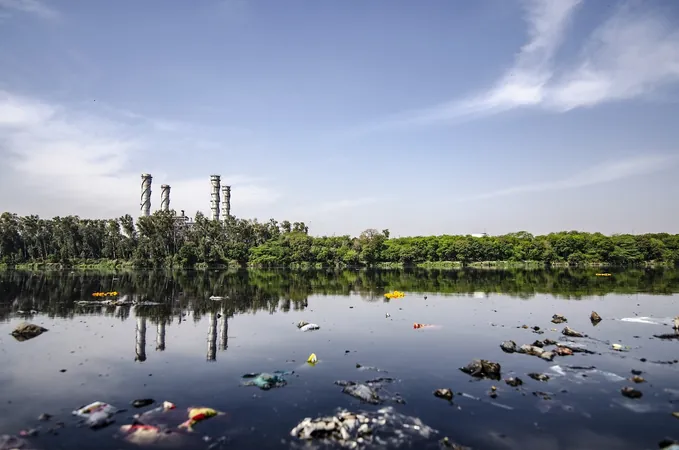
Australia’s CSIRO Champions Groundbreaking Innovations for Sustainable Mining
2025-04-01
Author: Sarah
The future of mining in Australia is being transformed by groundbreaking innovations spearheaded by the CSIRO’s Sustainable Mining Technologies Research Program. This initiative brings together approximately 100 researchers and affiliates committed to enhancing mine safety, environmental sustainability, automation, and digital connectivity.
Central to this program is the development of state-of-the-art technologies like advanced geospatial monitoring tools and autonomous systems, which aim to create safer and more efficient mining operations while minimizing environmental impacts.
Key Researchers
A trio of early-career researchers is leading the charge in revolutionizing sustainable mining practices. Romana Dew, a Senior Spatial Scientist, plays a pivotal role in bridging complex geoscience with practical applications that guide mining operations. Her expertise in visualizations and data analysis ensures that decisions within the mining sector are based on accurate and timely information.
With a solid foundation in geology, geophysics, and environmental consulting, Romana is at the forefront of integrating machine learning and artificial intelligence into the mining processes. These technologies allow mining companies to analyze vast datasets at impressive speeds, making strategic decisions that enhance both efficiency and safety. By employing AI for data analysis, operations can become not only more sustainable but also significantly reduce their costs and environmental footprints.
Romana’s enthusiasm for science communication has driven her involvement in STEM education and outreach programs, emphasizing the importance of cultivating a future in which sustainable mining practices are commonplace.
Karan Naidu, another trailblazer in the field, is leading the creation of the Mobile Mission Operations Centre (MMOC), a versatile command hub designed for remote mining and rocket launch operations across Australia. Karan’s unique blend of expertise in mechatronics and spacecraft systems engineering, coupled with his experience with satellite technologies, equips him to tackle the unique challenges associated with Australia’s remote mining operations.
The MMOC exemplifies how technologies born from the needs of space exploration can be seamlessly adapted to mining. The principle of zero-entry mining—wherein personnel are removed from hazardous situations—is enhanced by space technology and aims to ensure operational safety and efficiency on Earth.
Xulu Lin is pioneering the use of distributed fibre optic sensing (DFOS) technology to monitor microseismic events in underground mines. This innovative approach transforms ordinary fibre optic cables into sensitive sensors capable of detecting minute geological movements. By monitoring vibrations, strain, and temperature, Xulu’s research offers crucial insights into the stability of underground structures, greatly improving safety and operational efficiency.
With a strong background in computational seismology and geophysics, Xulu integrates AI into seismic data processing, allowing real-time analysis of extensive data sets. This not only accelerates decision-making regarding mine safety but also reduces monitoring costs compared to traditional methods.
These innovative projects reflect a broader trend toward smarter, safer, and more sustainable mining practices. By leveraging cutting-edge technologies such as advanced geospatial monitoring, fibre optic sensing, and mobile operations control, these researchers are not just redefining the mining landscape in Australia—they are setting a global benchmark for sustainability, safety, and environmental stewardship in the industry.
Stay tuned as these remarkable advancements continue to evolve, promising a greener and more efficient future for mining around the world!



 Brasil (PT)
Brasil (PT)
 Canada (EN)
Canada (EN)
 Chile (ES)
Chile (ES)
 Česko (CS)
Česko (CS)
 대한민국 (KO)
대한민국 (KO)
 España (ES)
España (ES)
 France (FR)
France (FR)
 Hong Kong (EN)
Hong Kong (EN)
 Italia (IT)
Italia (IT)
 日本 (JA)
日本 (JA)
 Magyarország (HU)
Magyarország (HU)
 Norge (NO)
Norge (NO)
 Polska (PL)
Polska (PL)
 Schweiz (DE)
Schweiz (DE)
 Singapore (EN)
Singapore (EN)
 Sverige (SV)
Sverige (SV)
 Suomi (FI)
Suomi (FI)
 Türkiye (TR)
Türkiye (TR)
 الإمارات العربية المتحدة (AR)
الإمارات العربية المتحدة (AR)